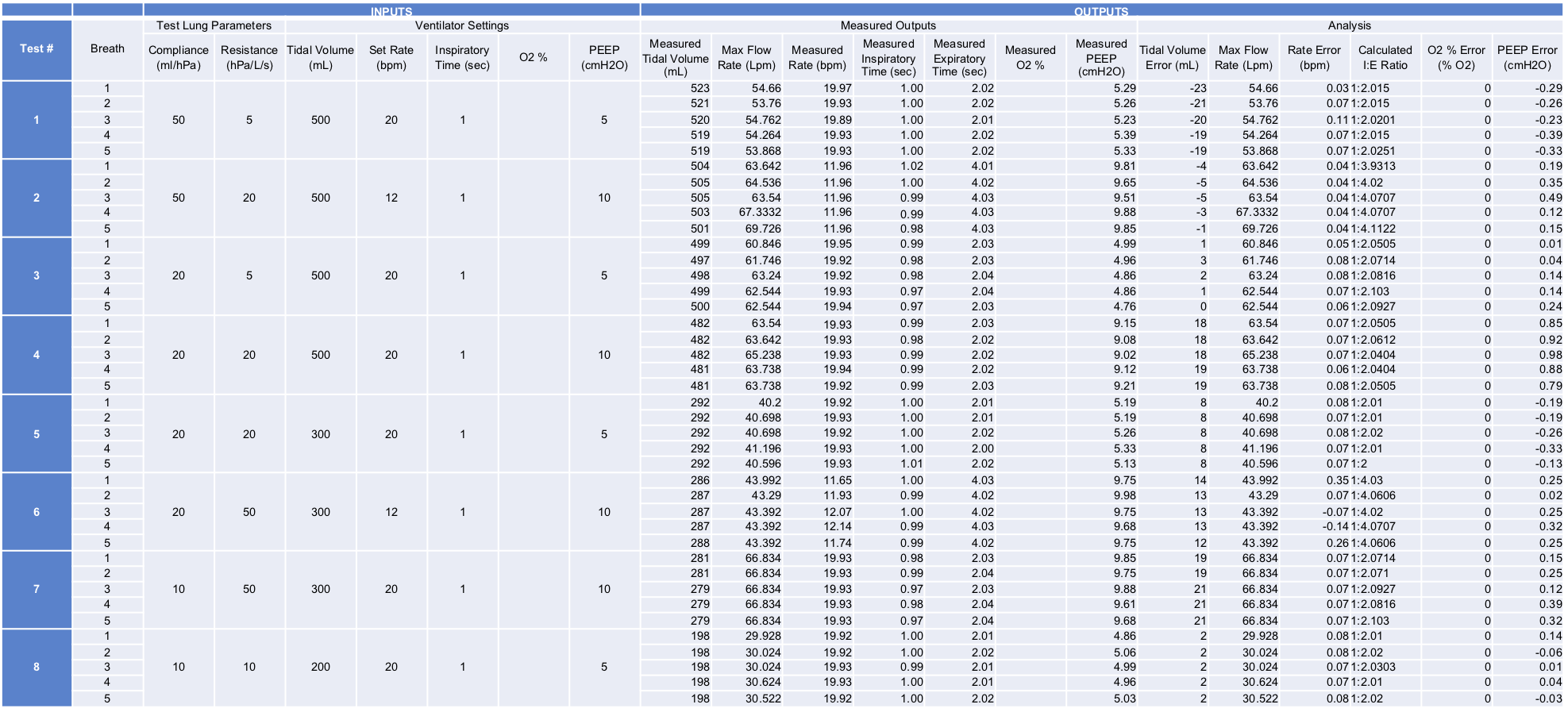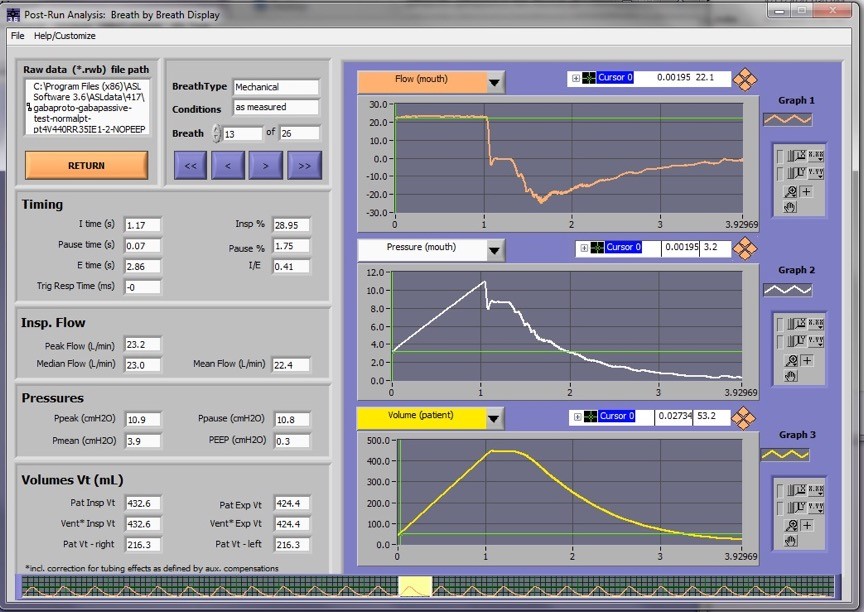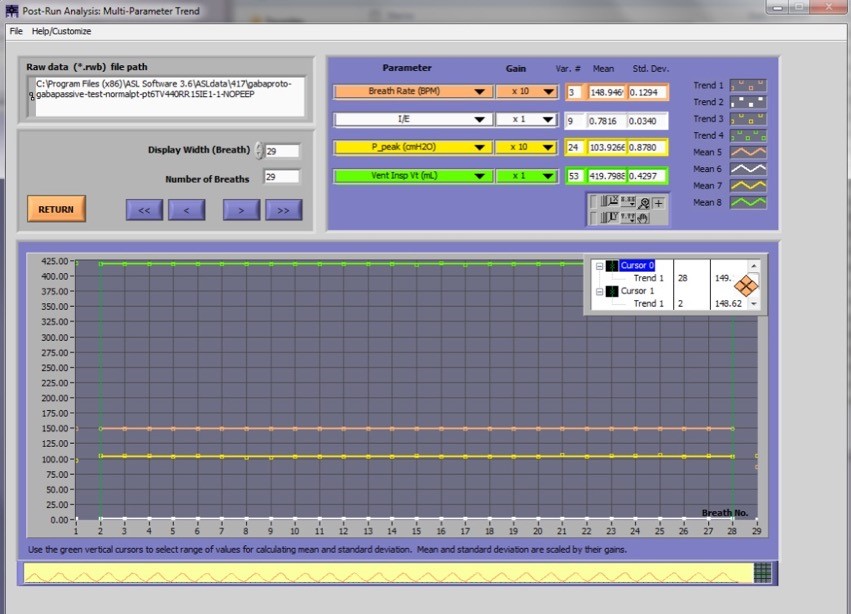On April 17, 2020, we tested a prototype of the proportional solenoid valve ventilator (with an SMC PVQ-6G-20 valve and a Siargo 50L/min flow sensor) on a ASL-500 lung simulator. We simulated 30 cases. We used five sets of parameters, four provided by Dr. Andrew Moore, and one by Dr. Ruth Fanning. The ventilator worked as expected in all cases.
On May 15, 2020, a second prototype with an SMC valve and a Honeywell 100L/min flow sensor was tested on the same simulator using a larger number of cases including pressure modes and spontaneous breathing modes. These tests identified the issue with the BVM valve but otherwise the ventilator worked as expected.
On June 20-21, a third prototype that included an explicit expiratory valve was tested on an Ingmar Medical Quick-Lung simulator. These tests used eight volume-control cases and eight pressure-control cases taken from the ISO ventilator specification. The tests were run with both mechanical PEEP and electronic PEEP. Results were logged with both the internal data logger and with an AD Instruments data logger with pressure and flow sensors at the ET tube. In all cases regulated quanitites were within 5% of target values and typically were within 2%.
In August 2020 a fourth prototype that included oxygen blending was tested on the Ingmar Medical Quick-Lung simulator. A subset of the tests from June 20-21 were rerun with varying FIO2 settings. Air and oxygen flows were recorded and analyzed to verify that FIO2 values were within 2% of target values.
A table summarizing the results from the eight volume cases from the June tests with mechanical PEEP is shown below:

The cases for the April 17 tests are:
| Patient | Description | Tidal Vol. | Resp. Rate | I:E | PEEP |
|---|---|---|---|---|---|
| 1 | 5’ Female | 150 | 15 | 1:4 | 5 |
| 2 | 5’ Female | 270 | 35 | 1:2 | 20 |
| 3 | 6’ 5’’ Male | 620 | 15 | 1:4 | 5 |
| 4 | 6’ 5’’ Male | 440 | 35 | 1:2 | 20 |
| 5 | 440 | 15 | 1:1 | 20 |
We ran each of these 5 sets of parameters on 3 patient models: a normal patient (compliance 50), an ARDS patient (compliance 30), and a severe ARDS patient (compliance 15). We ran each of these 15 combinations with and without PEEP – for a total of 30 combinations.
On all cases, the ventilator performed as expected. On case 4 with the severe ARDS patient breath stacking occurred and pressure started climbing. Tidal volume was reduced to regulate pressure. Where breath stacking did not occur, tidal volumes were fairly accurate (within 5-10%). The larger discrepancies were seen at the higher PEEP values indicating a need for slightly tighter control of volume.
Full results will be added in the future. Some representative screen plots from the April 17 tests are shown below:


